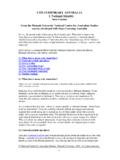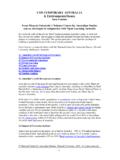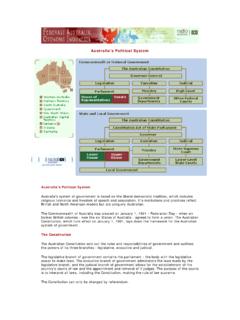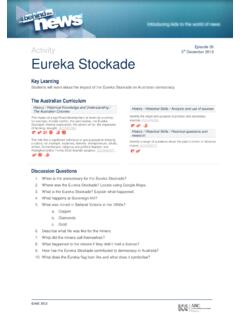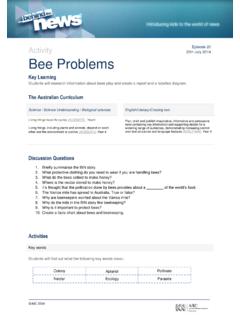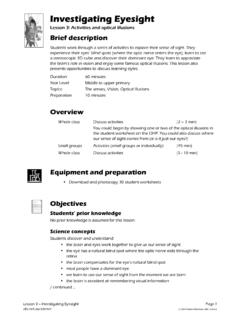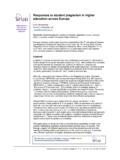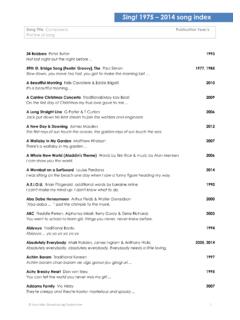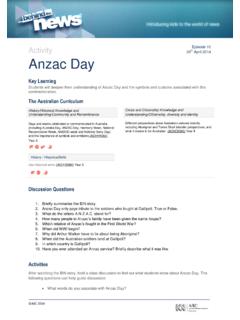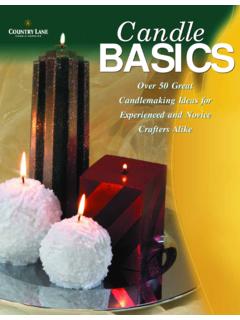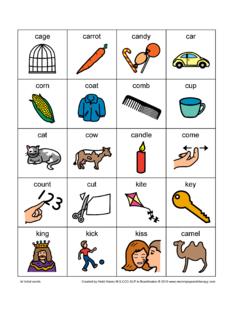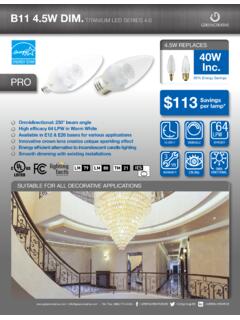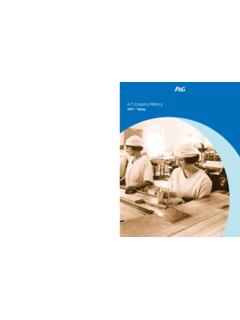Transcription of Lesson Plan 10 - Australian Broadcasting Corporation
1 Lesson plan Classic candle Experiment Brief description Students will find this classic experiment fun to do and amazing to watch but trickier to explain. A lit candle is covered with an inverted jar in a saucer of water, the flame expires and water rises up into the jar. Students test their explanations by experimenting with different candles, jars and bottles. They will also realise that prior knowledge can lead to plausible but incorrect conclusions. Duration: 45 - 70 minutes Year level: Middle to upper primary Topics: States of matter (solid, liquid, gas), thermal expansion, air pressure, vacuums, misconceptions in science Preparation: 10 to 20 minutes (depending on availability of materials) Extensions: Science: Teacher Demonstration 8: Hot air expands Science: Teacher Demonstration 11.
2 Leaping candle Flame (Teacher Demonstrations 8 & 11 are available online in PDF format) Overview Whole class Perform Teacher Demo 1 (see Teacher Notes), (10 15 min) discuss small group activities, worksheet, and safety precautions and allocate groups and jobs Small groups Experiment with various candle sizes and (20 35 min) different shapes of bottles and jars to test test scientific explanations of observations Whole class Class discussion of the activity: (15 20 min) y discuss the correct scientific explanation y discuss the common misconception described in the Teacher Notes y perform Teacher Demo 2 (see Teacher Notes) to clarify and/or help overcome remaining misconceptions Planning for safety.
3 The risks associated with this Lesson are easily managed by implementing a few simple safety precautions and behaviour rules. Students are likely to suggest many of these precautions themselves. Allowing them to do so in a discussion prior to the activity may help foster more positive attitudes towards, and closer adherence to the agreed behaviour rules and safety precautions. Please refer to the safety notes on page 8 for suggested safety precautions. You should always consider the individual circumstances of your students and classroom when planning lessons please consult your science coordinator or principal for further guidelines.
4 Lesson plan 11 | Page 1 2005 | ABC Science Online Materials and equipment Collect a selection of approximately 15 to 20 jars and bottles with different shapes and sizes (students can bring most of these from home). For safety, and to minimise the total number required, groups should only collect one jar or bottle at a time and these should be returned to the store before proceeding with the next one. Qty / group Description 11 Clear glass bottles and jars various shapes and sizes 12 Cake, normal and large candle per group (cut to size) 1 Shallow plate or saucer 1 Jug (or softdrink bottle) filled with water 1 Funnel 1 Marker pen and sticky tape 3 5 Drops of food colour 13 Lighter (teacher to light candles only) 1 Damp tea-towel (for wiping up and safety) 1 EG.
5 Glass juice bottles (small and large) / Coffee jars / Wine bottles / Glass softdrink bottles / Vases / Decanters 2 Cut long candles to approximately the same length as birthday candles 3 Teacher only lights candles when groups are ready to commence Preparation To minimise preparation time, ask students to bring as many of these items from home over several days prior to the Lesson . Cut long candles in half. Collect approximately 15 to 20 glass bottles and jars of various shapes and sizes, buckets (or ice cream containers) and candles and store in a convenient classroom location.
6 Photocopy sufficient quantities of the student worksheet (Page 11). Objectives This activity presents opportunities for the introduction or reinforcement of science concepts and for students to practice their science skills and to instil positive attitudes. The objectives below are suggestive only please consult your curriculum documentation and consider your students situation in your planning. Prior knowledge and common misconceptions A common misconception (the consumed oxygen misconception) is likely to arise during this activity as students attempt to explain their observations.
7 Discussing this misconception in a positive and supportive environment can instil positive attitudes towards science, conceptual development, and may help students become more open minded and able to accept new evidence and information. A teacher demonstration to help correct and overcome this misconception is provided on page 9 in the Teacher Notes. Lesson plan 11 | Page 2 2005 | ABC Science Online Objectives Science skills Students will: Observe that the candle flame gradually diminishes before expiring Infer that the candle flame diminishes and expires because it consumes oxygen inside the jar or bottle Observe that the candle flame burns longer in larger jars or bottles Infer that the candle flame burns longer in a larger jar or bottle because there is more air and therefore more oxygen available Infer that the candle flame heats the air inside the jar or bottle and that the air cools after the flame expires Observe bubbles escaping from the bottom of the jar or bottle (not)
8 Always noticeable with small jars or bottles with wide necks) Infer that the escaping bubbles result from expansion of the air inside the jar due to heating by the candle flame Observe that the water level rises very slowly (if at all) as the candle flame diminishes, and rises quickly after the flame has completely expired Infer that the water level rises due to contraction of the cooling air inside the jar the contraction of the cooling air creates a partial vacuum (a region of lower pressure) inside the jar and the higher external pressure forces air into the jar in order to equalise the pressure inside and outside the jar Record and describe their observations using appropriate scientific language and/or diagrams Science concepts a flame is the result of a chemical reaction which consumes fuel (in this case, candle wax)
9 And oxygen and produces heat and other gases a fire expires if either the fuel or oxygen runs out thermal expansion gases expand when heated and contract when cooled gases move from regions of high pressure to regions of low pressure until the pressure in both regions is equal a vacuum is a region of lower than atmospheric pressure Positive attitudes Students will identify and observe the safety precautions discussed prior to the activity discover that a plausible explanation for an observed effect may not necessarily be correct appreciate that misconceptions can arise from sound reasoning and accurate prior knowledge recognise that incorrect yet plausible explanations and misconceptions can be difficult to correct work cooperatively in small groups and ensure everyone has sufficient opportunities to see and understand the activity handle all equipment and water carefully and responsibly dispose of waste responsibly (eg pour waste water onto plants or garden beds instead of down the sink)
10 Lesson plan 11 | Page 3 2005 | ABC Science Online Procedure Teacher Demonstration 1 Whole Class (10 15 min) Demonstrate the Classic candle Experiment (see Teacher Notes page 5) students will enjoy seeing each step of this demonstration allow plenty of time for students to make predictions Discuss the objectives you have chosen for this activity, such as: Discuss the safety precautions you have taken during the demonstration and ask the students to suggest further precautions they should take during this activity (see safety notes on page 8) to establish a set of behaviour rules for the Lesson and write these on the board if desired Allocate groups and jobs (allocating job badges will minimise classroom traffic and the risk of accidents and spills) Experimenting with candles, bottles and jars Small Groups (15 20 min)
